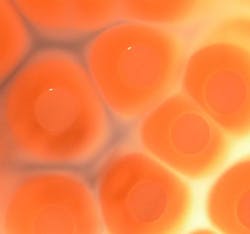FTIR spectroscopy method characterizes Staph bacteria quickly
Scientists at the University of Veterinary Medicine Vienna in Austria have developed an infrared (IR) spectroscopy technique for rapidly distinguishing strains of the bacterium Staphylococcus aureus (S. aureus)âthose that can cause chronic infections and those that cannot. What's more, the technique does not require the use of complex antibodies.
Related: Study shows that blue light destroys antibiotic-resistant staph infection
Related: IR spectroscopy speeds E. coli detection
Related: Shining near-infrared light on life
S. aureus frequently colonizes the skin and the upper respiratory tract of humans. A healthy immune system can fight the microorganism but once the immune system is weakened, the pathogen can spread and lead to life-threatening diseases of the lungs, the heart, and other organs. Moreover, S. aureus produces toxins in foods and can cause serious food poisoning. Its effects are not confined to humans: in cattle, S. aureus frequently causes inflammation of the udders, so the bacterium is also of great interest in veterinary medicine.
S. aureus was previously detectedâand the nature of its capsule checkedâby means of specific antibodies that bind the capsule. The procedure is relatively complex, as the antibodies are not commercially available and thus have to be produced in animal experiments. Tom Grunert and colleagues at the University of Veterinary Medicine Vienna have now developed a method by which the capsules can quickly and clearly be distinguished from one another without the use of antibodies. The technique relies on Fourier transform infrared (FTIR) spectroscopy, which involves shining IR light on the microorganisms under test. Then, the resulting spectral data are input into a so-called artificial neuronal network, which uses the data to work out the type of capsule. Grunert says that their method enables them to routinely test patient samples with an up-to-99-percent success rate.
Monika Ehling-Schulz, who leads the University of Veterinary Medicine Vienna, notes that detailed knowledge of the mechanisms of virulence and persistence and the way bacteria switch between them will help the researchers to develop novel and more effective therapies.
Full results are published in the Journal of Clinical Microbiology; for more information, see http://bit.ly/1aXPUb1.
-----
Follow us on Twitter, 'like' us on Facebook, and join our group on LinkedIn
Subscribe now to BioOptics World magazine; it's free!

